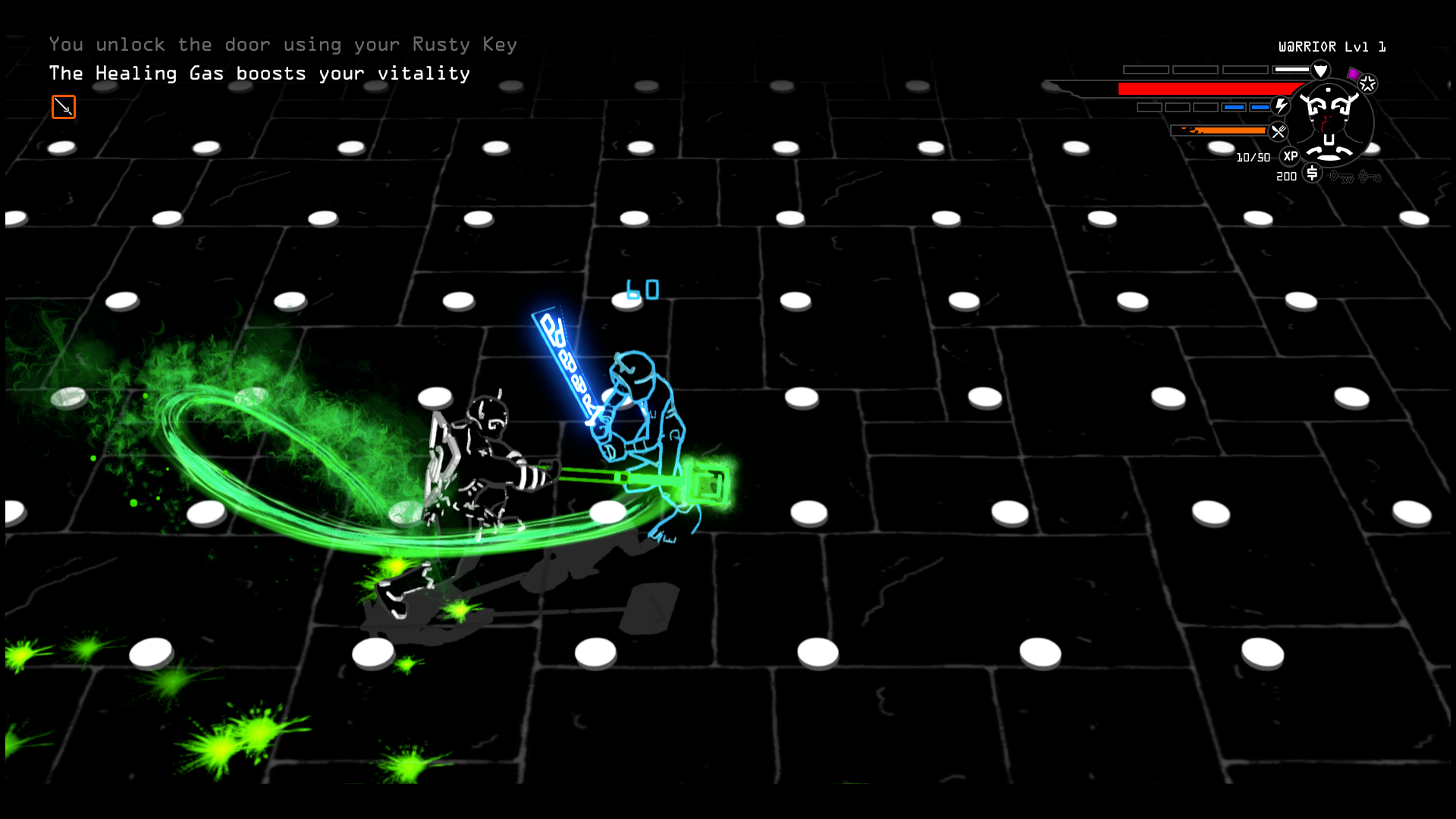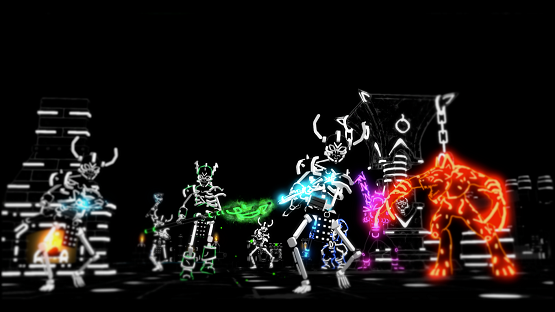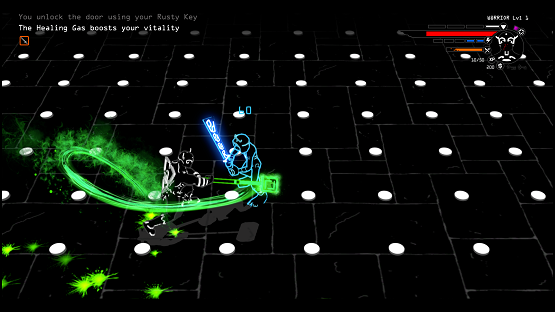Scotland-based Stormcloud Games unveiled its upcoming ASCII-inspired roguelike Brut@l for the PS4 during PlayStation Experience 2015. Brut@l comes with an interesting art style and concept, tasking players with navigating through a procedurally generated world constructed from ASCII. Their goal is to reach the 26th floor and take on the Guardian of the Dungeon, using a variety of ways available to them. With a local co-op mode on offer alongside a level editor, Brut@l is a game worth looking out for, especially if you’re into classic roguelikes.
We recently got a chance to chat with Stormcloud’s Richard Wood, who told us more about the upcoming title, the studio’s time at PlayStation Experience 2015, approaching Sony, and more.
PlayStation LifeStyle: You’ve said you wanted to make an ASCII roguelike game partly because it’s one of those nostalgia-inducing genres for you. Are you specifically targeting an older generation of gamers or will Brut@l have something for everyone?
Richard Wood: I think that because Brut@l draws on the heritage of those original ASCII titles it will automatically evoke a sense of nostalgia in gamers of a certain generation, or gamers with knowledge of past or present ASCII roguelikes. However, our aim with the game is to appeal to as wide an audience as possible. We still love those classic ASCII games, their aesthetic and their gameplay mechanics, and we want to make them more accessible to today’s gamers by creating a realtime, 3D re-imagining of our favourite elements.
A lot of gamers who were unaware of the ASCII heritage of games thought that Brut@l was actually inspired by Tron. And while we are not based on Tron, we did want to evoke that sensation that the player had somehow “fallen” into a 2D ASCII game and found themselves inside a full 3D environment created from ASCII.
Our hope is that the art direction will entice both the new and older generation of gamers to take a look, and that the gameplay will hook everyone.
PSLS: How did you go about approaching Sony and how did the opportunity to be featured at PSX 2015 arise?
RW: The team created a demo of the game, a rough video that showed our vision but was someway off the final product. We sent it over to the Strategic Content Team at Sony and we were incredibly lucky that they just got it immediately. After that it was all systems go and we’ve had a great relationship since.
In terms of PSX we’re incredibly fortunate that PlayStation have such a passion for indies and pushing them on the platform. We got noticed by several members of the US PlayStation division who latched onto the game immediately and really championed us, helping us get all the way to sunny (in comparison to Scotland!) San Francisco. I think with a game like Brut@l we stand out due to our art direction, which is great, but we had to make sure the game played well. The team put in an incredible amount of effort to take our high level concept and develop it into a good game and this resonated with Sony, who, thankfully, put us onto the main stage.
PSLS: Brut@l is coming to the PlayStation 4 and PC. What thought process went into selecting an appropriate platform? Why not PlayStation Vita or a non-Sony console, for that matter?
RW: Development wise we’re really small, we currently have four programmers that are focussed on systems like procedural generation, gameplay, our dungeon editor, co-op , optimization, AI, etc etc. If you cast the net too wide, for example saying you’ll be on every platform, something has to give. For us we wanted to first and foremost have a great game, we didn’t want to jeopardize the gameplay just to hit another platform.
PSLS: There’s been a lot of talk about indie games in recent years. We’ve seen gamers warm up to them, but there’s also a proportion of the community that feels platform owners have gone a bit overboard with the indie push. As a small studio, is that a point of concern for you at all?
RW: In a word, no. I think so many different people have used the word ‘indie’ in so many different ways that everyone has a different opinion on what it means. We’ve seen traditional AAA games get bigger and bigger every year; the scope gets bigger, the budgets get bigger and more often than not, the time between releases gets larger. Look at Uncharted 4, for example, they’ve pushed the date back and it makes sense; release something that’s great, don’t rush something early. I think a healthy balance of game types, genres and lengths is great for all gamers. Not everyone will like everything, but that goes for all forms of entertainment. If I got a Rocket League experience once a year sandwiched in between something like Bloodborne and Fallout 4 I’d be happy, that won’t always happen, but it’s a great example of the diversity available to gamers.
PSLS: Speaking of Rocket League, the game was launched as a PlayStation Plus title and admittedly, that played a significant role in its success. Have you considered or been in talks with Sony about how you will launch Brut@l? Would you be open to offering it as a PS Plus title?
RW: It’s honestly not something we’ve spoken to Sony about yet. As a gamer I’ve loved PS Plus, it’s allowed me to try a lot of games I’d perhaps miss and I’ve found some great titles, Rocket League being the obvious example. We’re open to the conversation and I’m sure we’ll have it at some point, although the outcome is uncertain at this time.
PSLS: Let’s talk about Brut@l. Was the need for an original visual style to stand out in the indie space part of your consideration when deciding to go for an ASCII aesthetic?
RW: The ASCII style of the game came long before we considered the marketability of the game, or how we’d stand out. In all honestly, the ASCII theme came before a lot of the key systems had been set in place. We describe the game as what we imagined when we we’re playing old ASCII roguelikes, we saw basic representations on the screen back then, but in our imaginations we were traversing fully realized 3D worlds. We wanted to bring that to life and were fortunate enough that others liked our art direction, helping us stand out.
PSLS: What freedom does the ASCII theme offer, and conversely, what are its limitations?
RW: Honestly I think you’d be surprised how well it’s gone. I don’t want to say it’s been simple as we’ve definitely had some challenges, but overall the team got into the right creative headspace really quickly and since then it’s been all systems go. I actually think having an ASCII theme, and the limitations that everything has to be made from ASCII has been freeing and creative in many ways, it gives you set rules to stick to and makes you be creative in different ways.
PSLS: Will Brut@l have a narrative?
RW: No. The game has a sense of life to it with the level layouts and items you come across, but it’s all driven by your imagination, we have no over arching narrative.
PSLS: You’ve said that Brut@l will offer local co-op at launch, and this could potentially be one of its key selling points. Are you planning to market this as a co-op experience or is your emphasis on the single-player mode?
RW: Our emphasis is on player choice when it comes to how you play. Both modes are a lot of fun; if you want to just jump in and go at it alone you can do, however if you’d rather sit down with a buddy and traverse the dungeon together, go for it. We want an experience you can play on your own and enjoy it, but something that also caters to an audience that want to play with friends.
PSLS: What other key selling points does Brut@l have that makes it stand out from other games in the genre?
RW: Core feature wise we share a lot of what you’d expect; procedural generation of levels, perma death, and ever-increasing difficulty amongst others. However, we’ve tried to bring some of the traditional roguelike features to the forefront of our experience. We have weapon crafting, potion brewing, magic wands, armor and a level system.
One of my favorites is our potion system. You can find ingredients in the world to brew potions, however, our twist comes from their random nature. Potions reset every playthrough, so a green potion may be poison one playthrough, but health the next. The only way to determine what it is is to drink it or throw it at an enemy. This opens a risk vs. reward strategy; you risk inflicting damage on yourself but if you decide to use it on an enemy they could get stronger. It adds another random element to the game that makes the experience never the same twice.
On top of that we also have some bigger features, for example, our dungeon editor. You can make your own levels, play them locally and then share them online for your friends or the world to play. This has resulted in some great creativity internally, for example, platforming levels that forego the idea of combat. We hope this will allow players to test their creativity as well as enjoy, and die to, levels from others!
PSLS: To showcase your work at an event like PSX can be pretty daunting, especially when you’re letting people try your game for the first time. What kind of feedback have you received on Brut@l thus far?
RW: Yeah it was daunting! Feedback wise everyone seemed to get the game immediately. While we believed in the art direction and gameplay choices, it’s still a nerve wracking experience watching people play your game for the first time.
Overall, I think our biggest takeaway was just user experience. You make a system and play test it internally, using it in way X. But when you give it to thousands of gamers, people play it in way Y, Z and many others. You need to take this information and improve the game so that when it’s released, it’s not the same problem again and again.
We had a lot of ‘oh yeah…’ moments watching players, but those are to be expected. In terms of overall feedback, I think it came down to balancing and combat. People got our combat quickly, however, just getting to watch people fight enemies over and over we realized that while it was an acceptable system, it could be a lot better. This, for us, was the biggest takeaway from the event; make fighting and killing enemies feel better.
PSLS: Last but not least, is there anything specific that you plan to work on now that you’re back home in Scotland? What are your plans between now until launch?
RW: The game, feature wise, is complete. You can do everything; fight every enemy, use every feature, and complete the game. This is a great milestone but that said, we’re not done! Now, the goal is to fine-tune everything based on our observations at PSX and our own experiences. We’re really happy with the core game, we just want it to be better. Making game features is in many ways the easy part, the hard part is where we’re at now; making everything feel solid, fluid and enjoyable.
There’s a saying in game development that the last 10% of the game takes as long as the first 90% of it. We’re in that 10% now, taking all the systems and content we’ve made and making it better.
We’d like to thank Stormcloud Games, especially producer Richard Wood, for taking out the time to have an in-depth chat with us.
Brutal PS4 Interview
-
Stormcloud Games
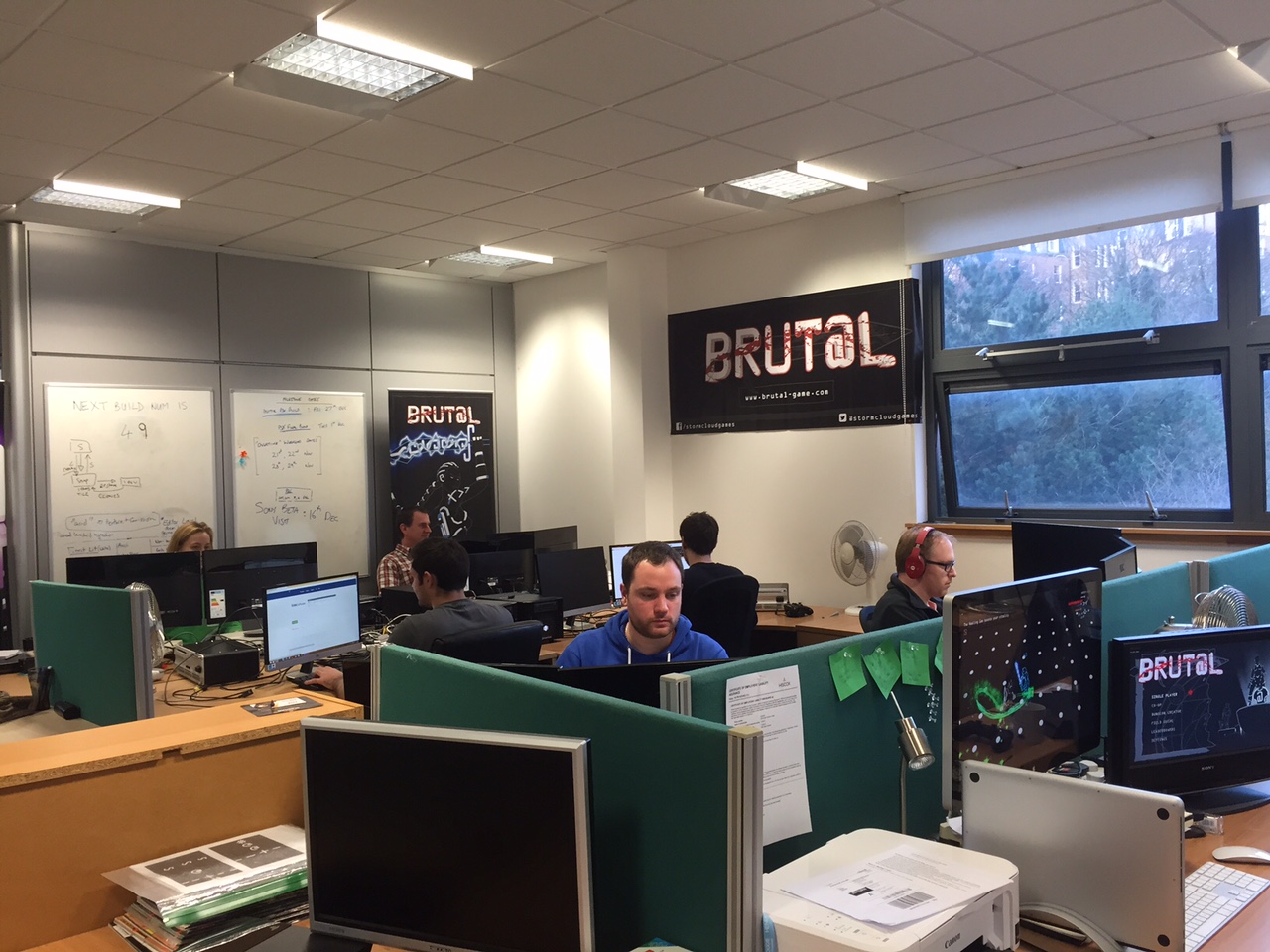
-
Stormcloud Games
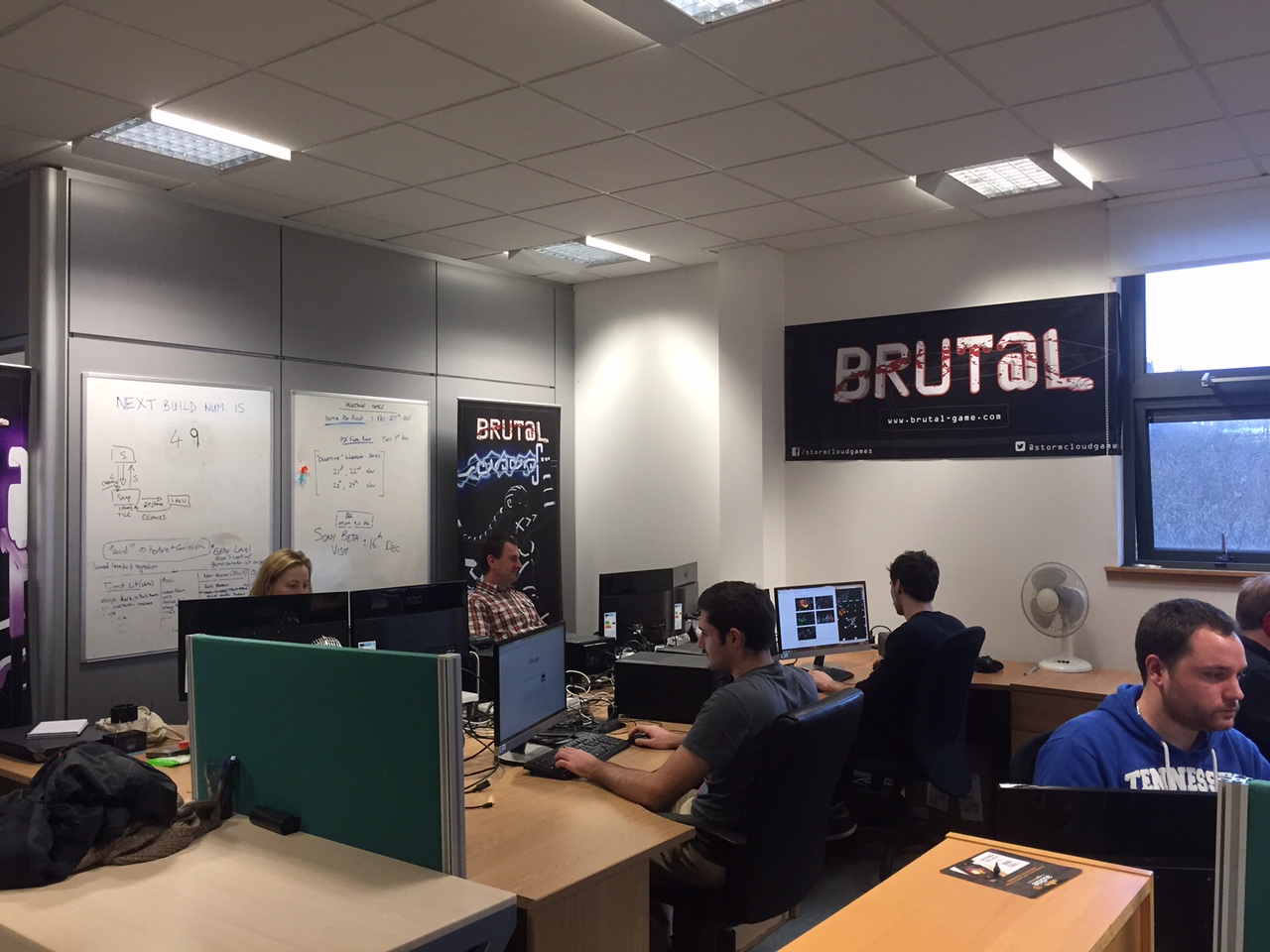
-
Brut@l
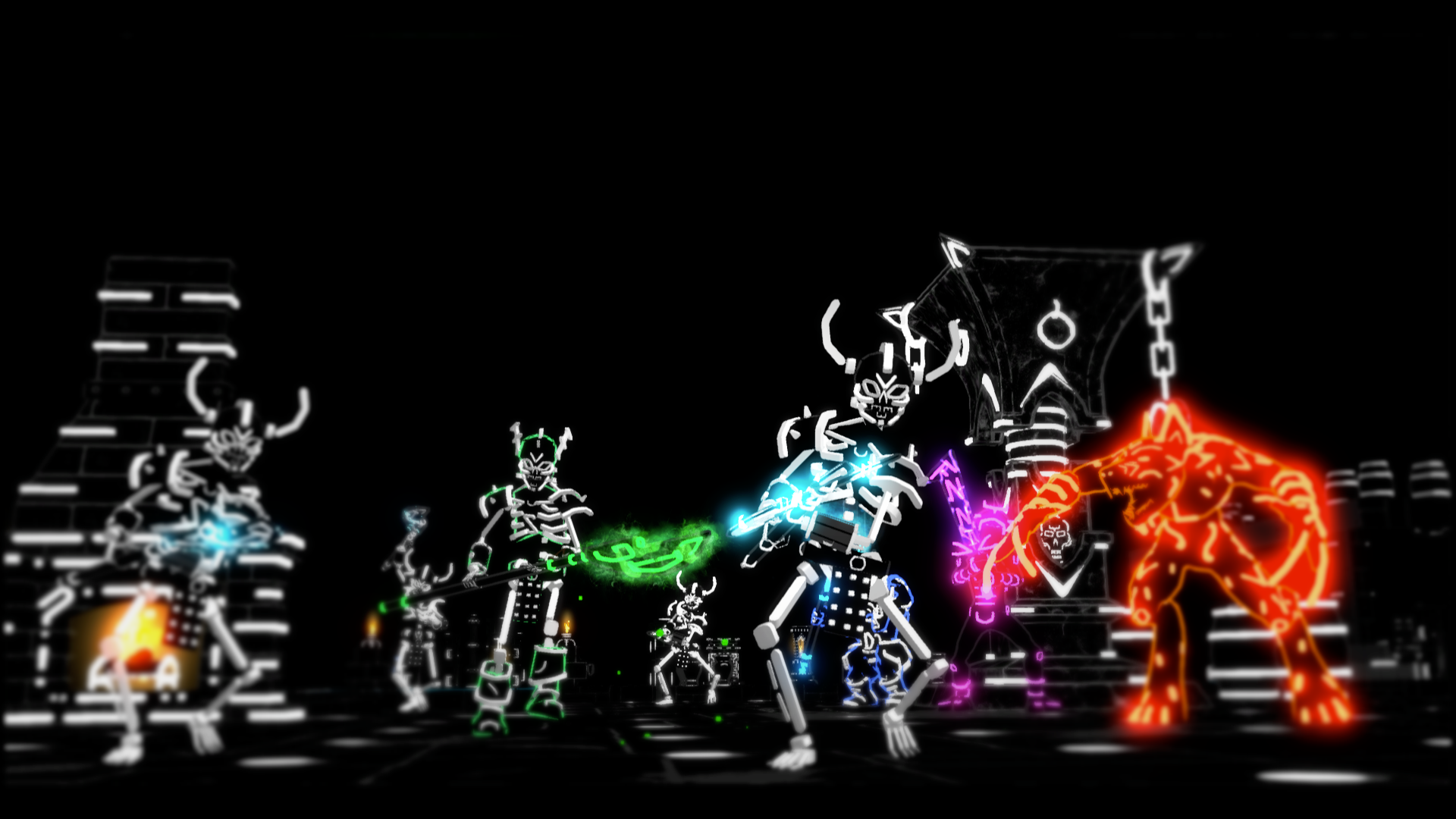
-
Brut@l

-
Brut@l
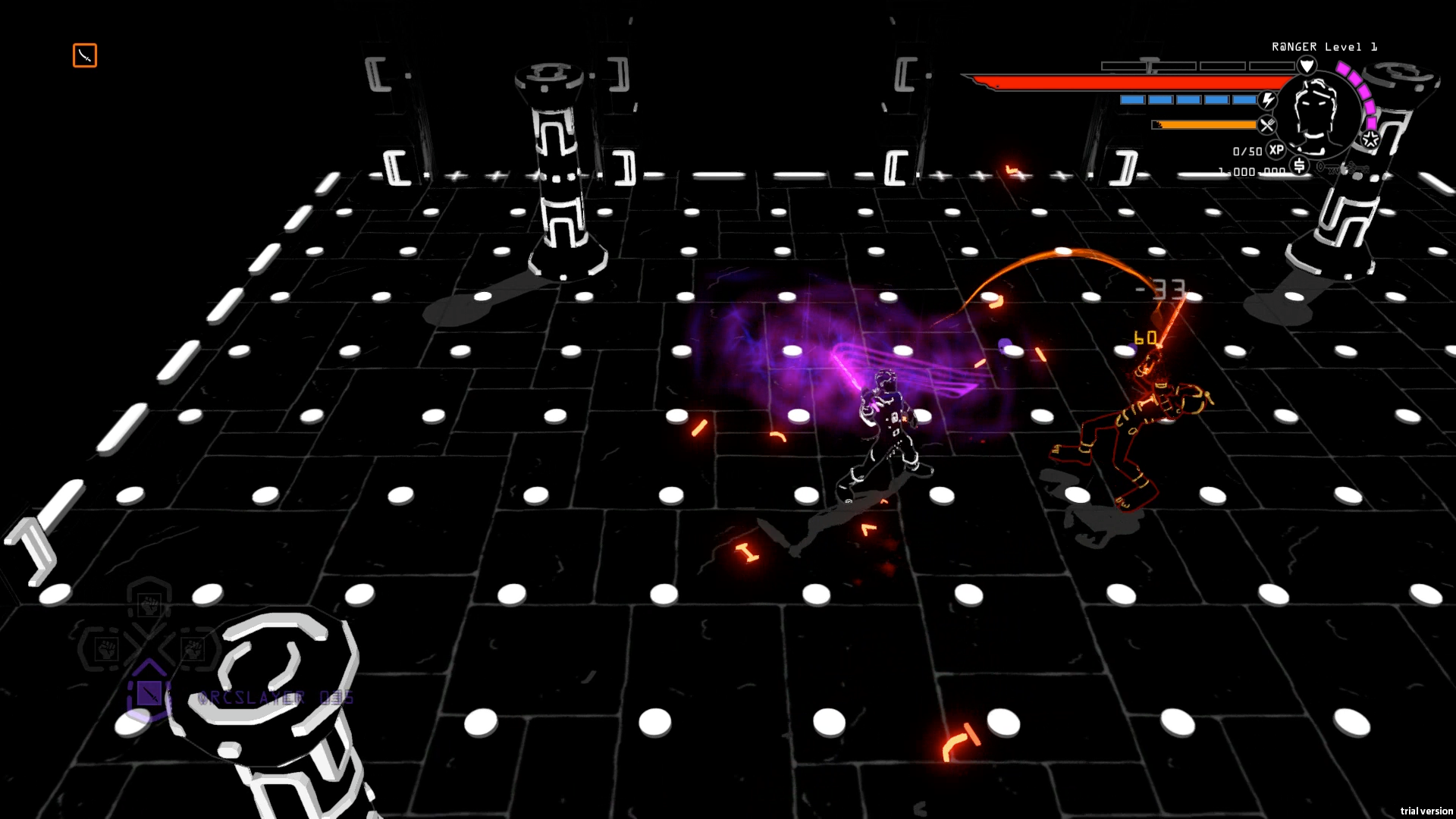
-
Brut@l
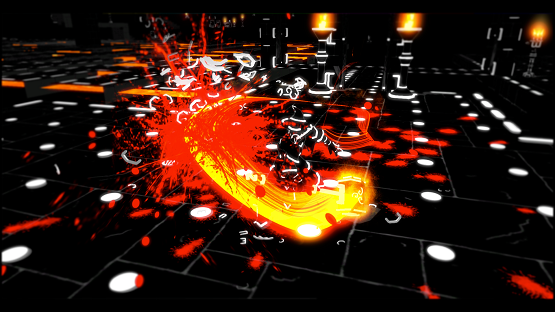
-
Brut@l
